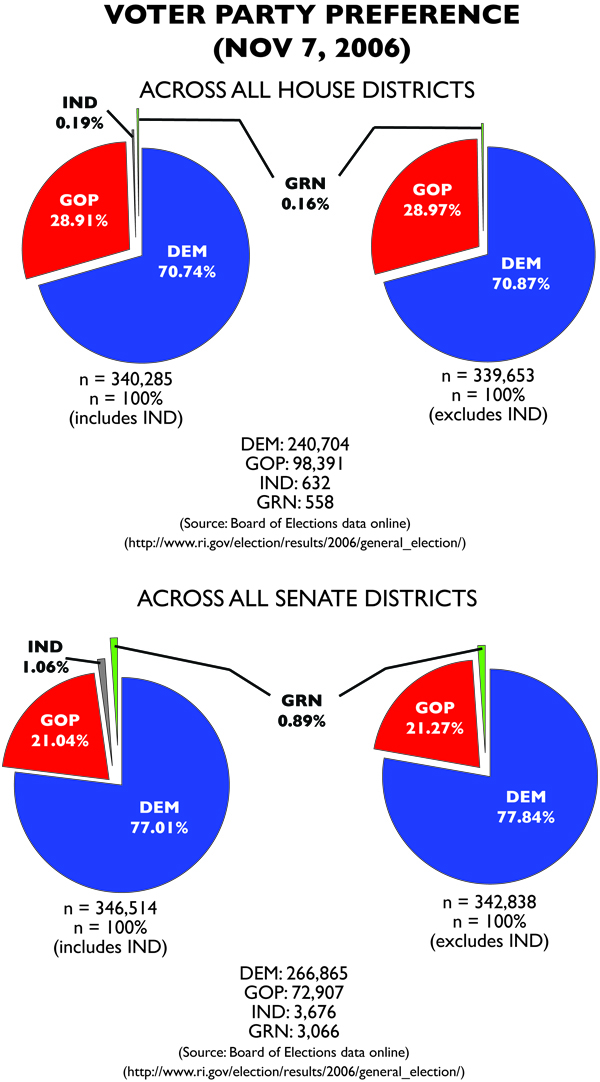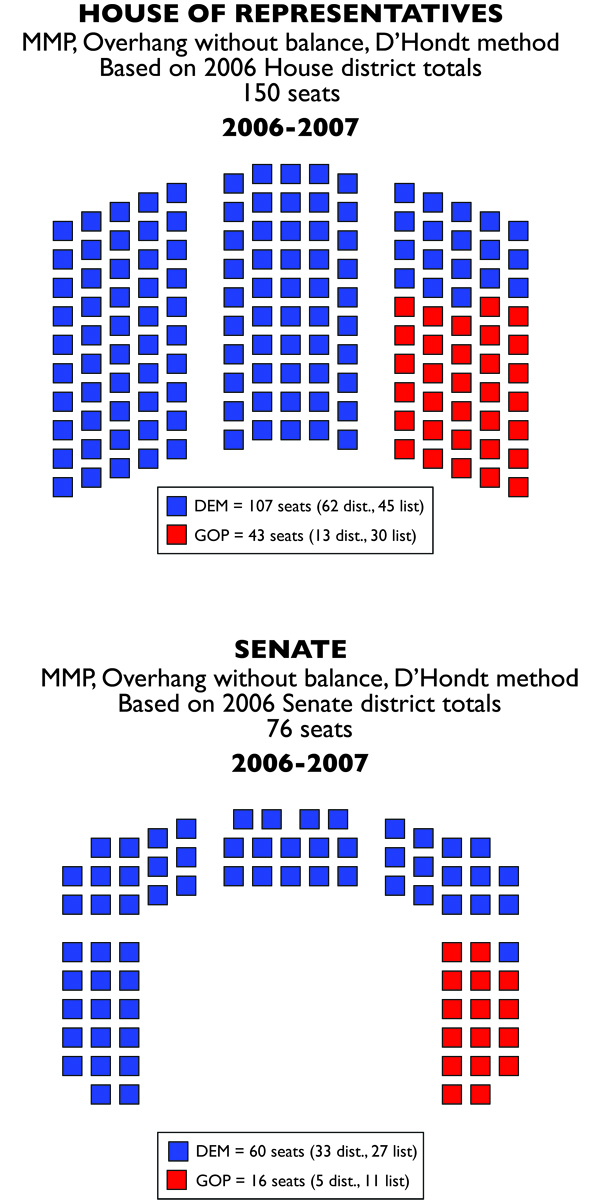
Nationally, the Bush Administration’s bungling of immigration reform and the ongoing failure to end the Iraq War (while the falsification of the cause for war was becoming apparent) had made the Republican Party toxic. At the same time, Howard Dean’s chairmanship of the Democratic Party began institutionalizing data collection for the party via NGP VAN. Democrats were vitalized to throw the Republicans out of power, ending GOP dominance in Washington since the Contract With America.
In Rhode Island, Republicans further weakened incumbent US Senator Lincoln Chafee by primarying him with right-winger Stephen Laffey. When combined with the anti-Republican fervor sweeping the country, he went down against former RI Attorney General Sheldon Whitehouse.
Gov. Donald Carcieri narrowly won reelection over Lt. Gov. Charlie Fogarty, and as usual, the whole slew of general officers below the gubernatorial level were returned as Democrats.
Low Republican turnout meant gains for Democrats in the GA. Close to 50,000 fewer people voted Republican in Senate races than in 2004, while around 30,000 fewer people voted Republican in House races. Combined with a failure to contest district seats, and Democrats saw significant gains. Democrats gained 10 seats in the House and nine seats in the Senate; with Republicans losing the equivalent.
Republicans complained about the master lever costing them votes. Democrats smiled.
Implications
In real life, this was not actually as stunning a shift. In an MMP election, the shifts are 10 seats in the House, 9 in the Senate; all to the Democrats. In reality, Democrats held steady at 33 seats in the Senate, and only gained two seats in the House. What’s even more stunning to me is that while votes for Republican candidates completely collapsed, Democrats actually boosted their turnout over 2004, which defies the common wisdom of “presidential election years favor Democrats because of high turnout.”
Interestingly enough, the vote for independent candidates completely cratered at this point, with House independents only receiving a combined 0.19% of the vote. In 2008, it would soar to the heights it’s achieved in the last three elections.

This is Part 6 of the MMP RI series, which posits what Rhode Island’s political landscape would look like if we had switched to a mixed-member proportional representation (MMP) system in 2002. Part 5 (the Election of 2004) is available here. Part 7 is a look at the Election of 2008.
